Last year over 700 boat owners who have non-trailered boats moored in marinas around Aotearoa…
Chasing eDNA signal of the Mediterranean fanworm in the Bay of islands
As part of the DETECT Research Aim of the Biosecurity Toolbox program, the Cawthron team started to employ modelling approaches to better understand and predict the dispersal of eDNA in the marine environment. The biophysical model developed by Ross Vennell is aimed to enhance their detection probability by adjusting surveillance design (i.e. sampling times, locations, frequency) and predict where the source population is. This will help to control or direct management efforts.
We chose the Mediterannean fanworm Sabella spallanzanii as a model organism to validate the generated prediction of eDNA dispersion under the influence of tidal water movements around our test marina. The fanworm is a notorious marine pest, first detected in New Zealand in 2008 and now present in many of New Zealand harbors. It can form dense colonies and interfere with native sessile organisms. It also has a high filtering ability that may affect planktonic communities and food availability for other filter-feeding species, like mussels or oysters. The fanworm has a high spread potential, mostly mediated through the attachment to commercial and recreational boats. Due to its enormous biosecurity risk to the New Zealand environment, mitigation of its further distribution in New Zealand coastal waters is high on the agenda of regional governments and biosecurity practitioners. The availability of recent experimental data on the shedding and degradation rates of S. spallanzanii eDNA was essential for initial parametrisation of the model.
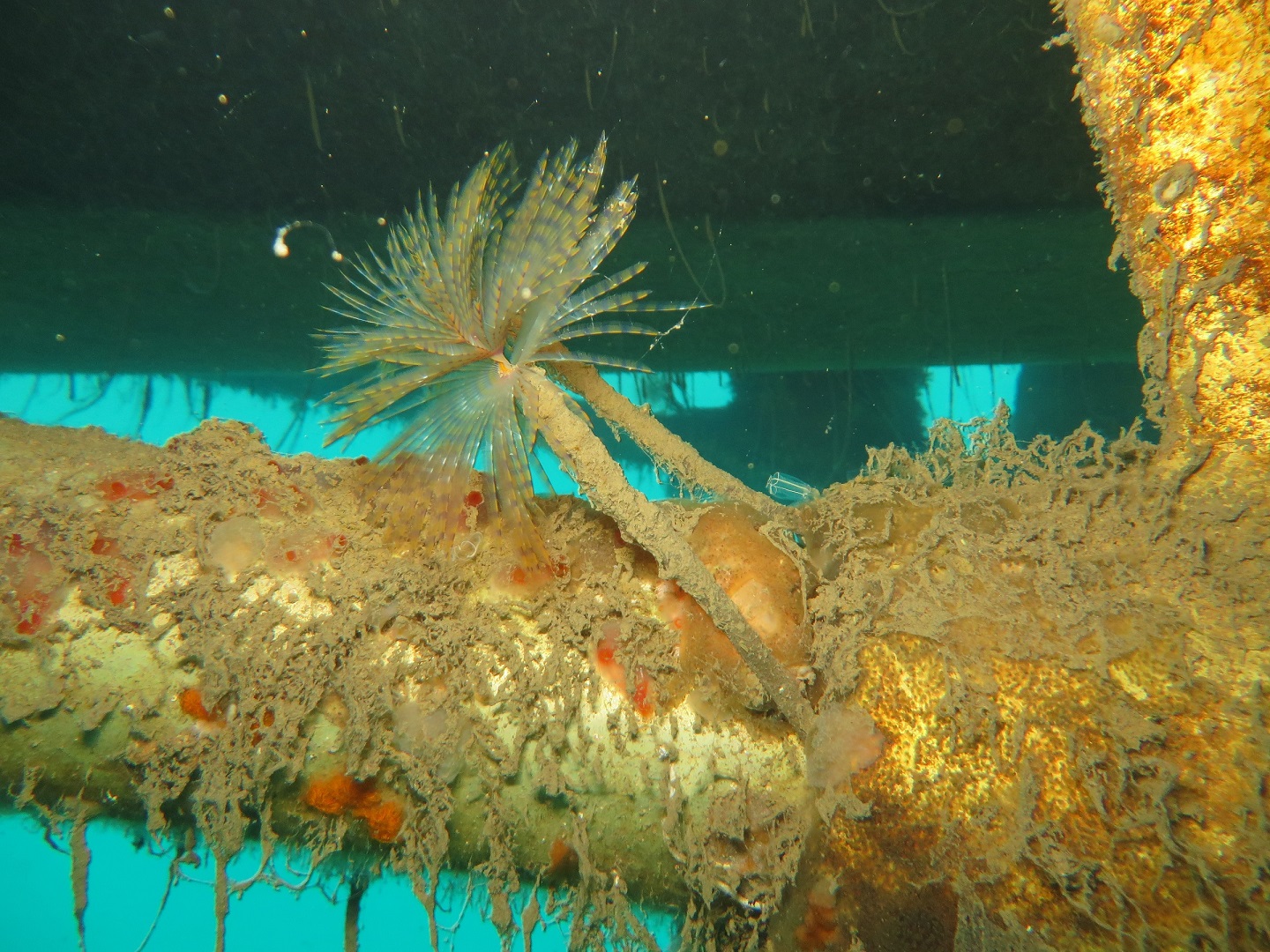
Mediterranean fanworm on a vessel’s propeller shaft (picture provided by the Marlborough District Council).
Considering current information on the distribution and population status of the Mediterranean fanworm, and following consultations with partner regional councils, the Bay of Islands was selected as a case study area for developing the model. In that region, the population of the fanworm is believed to be restricted to the Opua marina and adjacent mooring fields. This makes the area suitable for empirical testing of the model performance in tracing the dispersal of target eDNA. In other places (like Whangarei or Waitematā harbour), the fanworm has spread too widely and its ubiquitous populations would produce too much noise in molecular signal, restricting robust model validation.
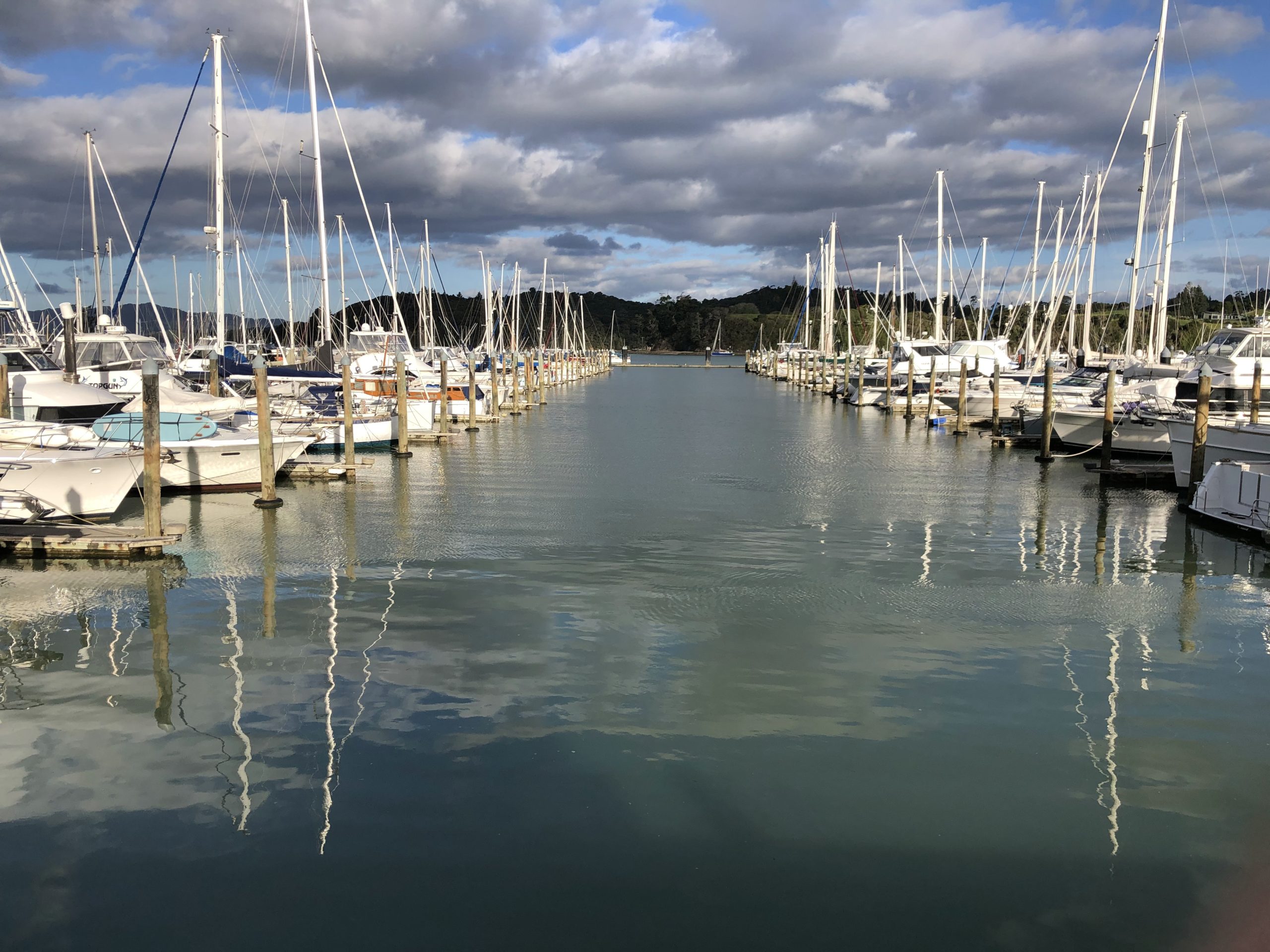
Opua marina.
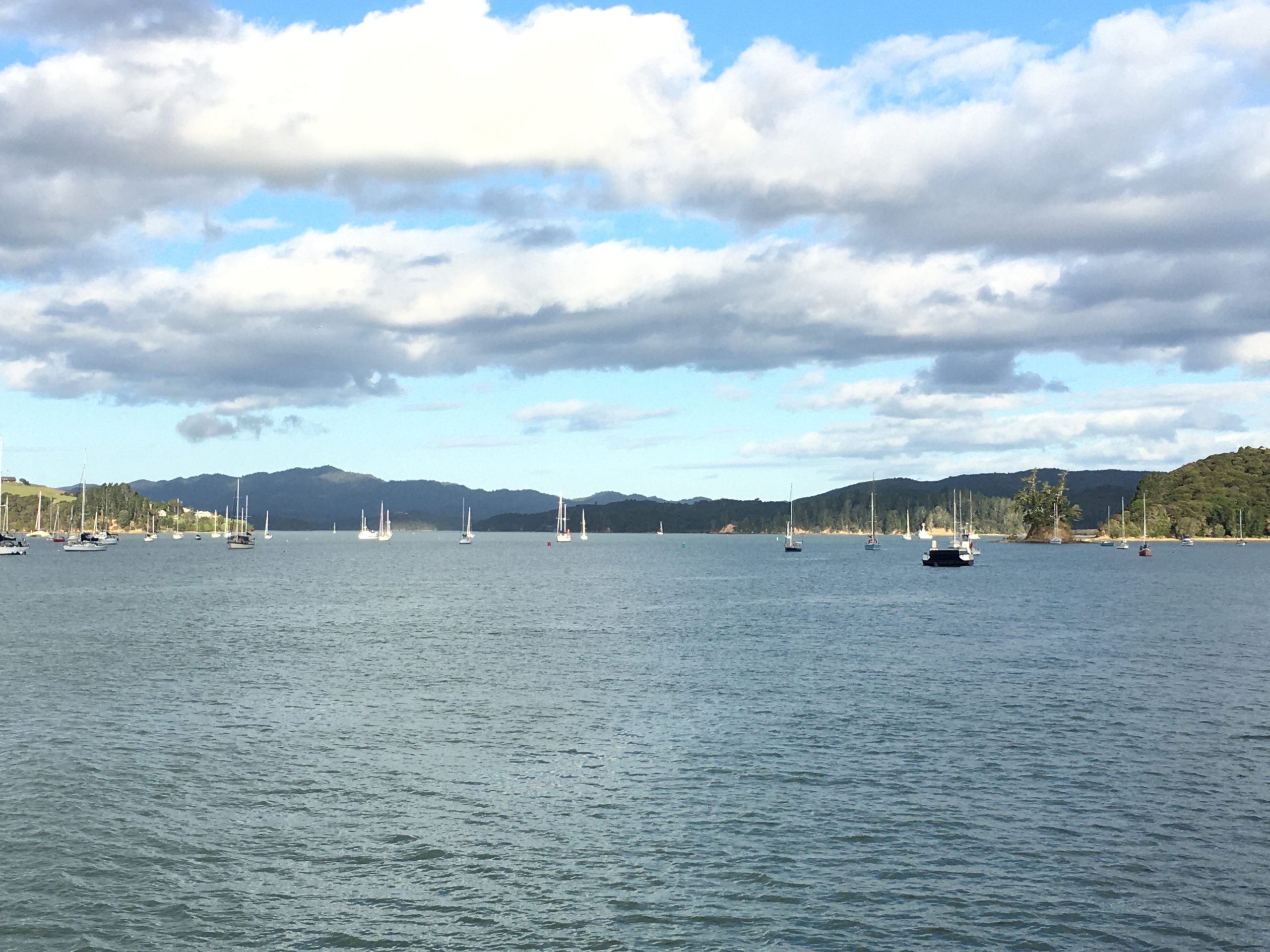
Mooring field adjacent to Opua, Bay of Islands.
Appealing for choosing Opua area as a study site was also the fact that the area is surveyed bi-annually for S. spallanzanii distribution as part of MPI’s High Risk Site Surveillance Programme. The Northland Regional Council (NRC) performs additional surveys as part of a jointly funded NRC and Biosecurity New Zealand pest control effort. During these surveys, divers are sent into the harbor to count individual worms and remove as many of them as possible to control the spread or ideally – eradicate them completely from this location. Data collected during these surveys is critical to inform model setup and validation.
After the model is created (see below video), the next task is to test whether it can robustly predict where and when in the tidal cycle eDNA can be detected given the current fanworm distribution in the area. To validate the predicted signal strength (eDNA concentrations) we need to determine if this is consistent with the measured concentrations and their changes over the tidal cycle (13 hours of water sampling across several sites in the area).
Modeled spread of Sabella eDNA over the tidal cycle from two assumed population “pockets” within Opua marina.
It was important to time our experiment so we collected samples between the screening survey (which provides the updated information on the species distribution) and the next round of extensive eradication campaign when most of the organisms would have been removed. We had less than a month to design the study, organise our gear and ship everything from Nelson to Northland. In the uncertain times of COVID19 pandemics and associated logistical complications, the task is not that trivial as it seemed to be. For example, unexpected delays when ordering some specific consumables from overseas, like 500 filter membranes needed for sample filtration. Thus, being slightly nervous about their timely arrival, we doubled the order (500 membranes) from two different suppliers. The first supplier delivered 100 membranes just two days before the field trip while the remaining 400 membranes got stuck somewhere. The second supplier shipped 400 membranes to Cawthron just the night before departure and forgot about the remaining 100. In the end, we had exactly the needed amount! All in all, we shipped an 80 kg pallet of gear and a big parcel with sampling bottles up north.
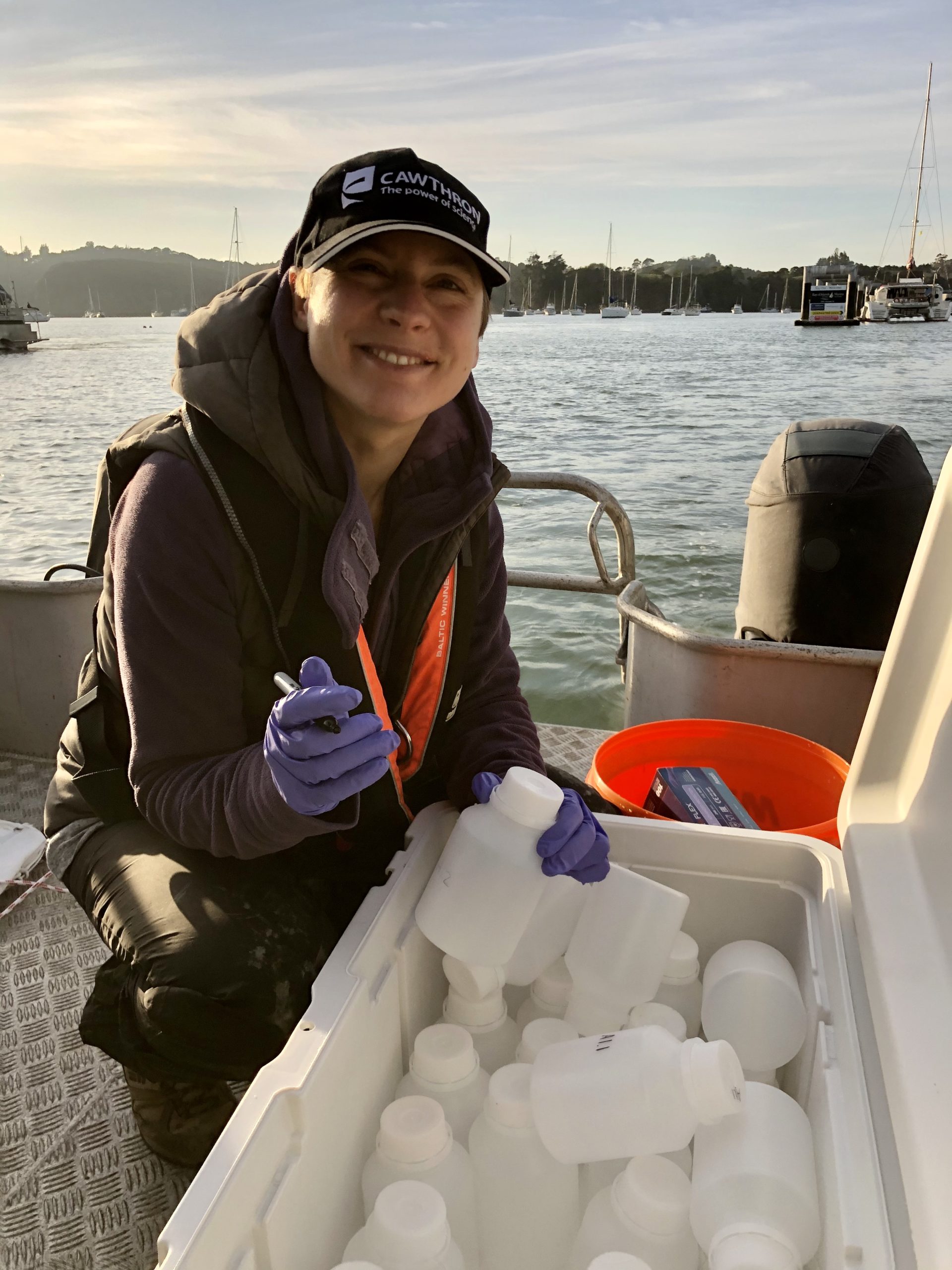
Ulla von Ammon (Cawthron) is labelling a bunch of sampling bottles for the boat sampling crew.
With the amazing help of the NRC team (Kaeden Leonard, Kylie Pedersen and Kathryn Lister) we were able to set-up our field experiment, with 6 sampling stations across the harbor, boat and skipper support on the sampling day and a wet lab for sample filtration. However, we still needed an extensive field team to rigorously perform hourly sample collection at 6 locations over the 13 hours sampling adventure! Without the help from more NRC staff (Curtis Harris, Nick Bamford, Rachel Kennedy and Sam Meldrum), Patuharakeke Te Iwi Trust’s Taiao Unit (Ari Carrington, Taryn Shirkey, Steve Johnson), Nga Tirairaka o Ngati Hine Trust (Wiremu Keretene) and Pōkai o Ngāti Manu (Ngairo Tahere), our team would have not been able to complete this enormous endeavour. This versatile team was amazing in showing all enthusiasm, understanding our complicated sampling schedule and helping out until the last minute of the sampling day, which was already long after regular working hours.
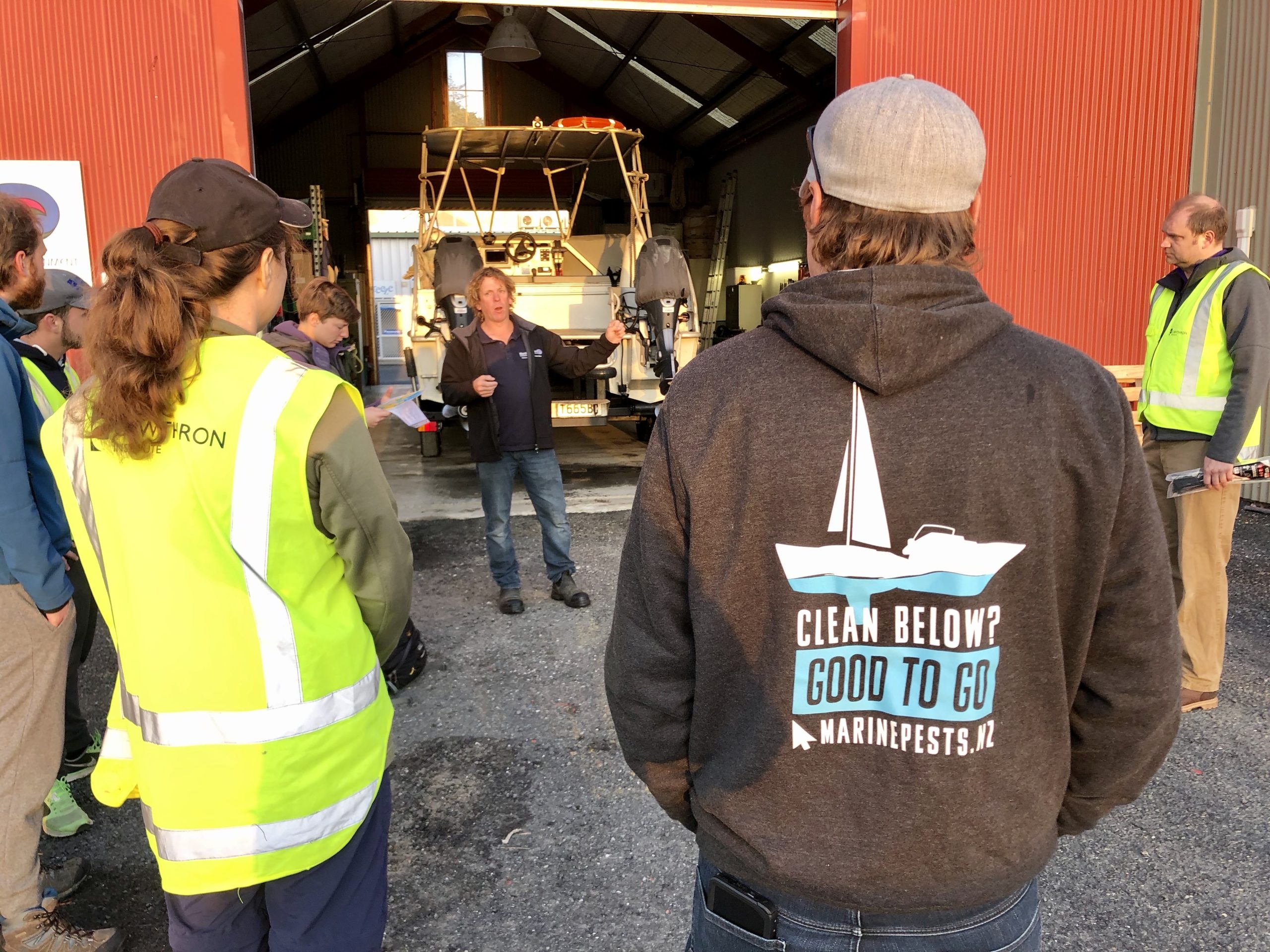
Safety briefing for the sampling team by NRC skipper Sam Meldrum.
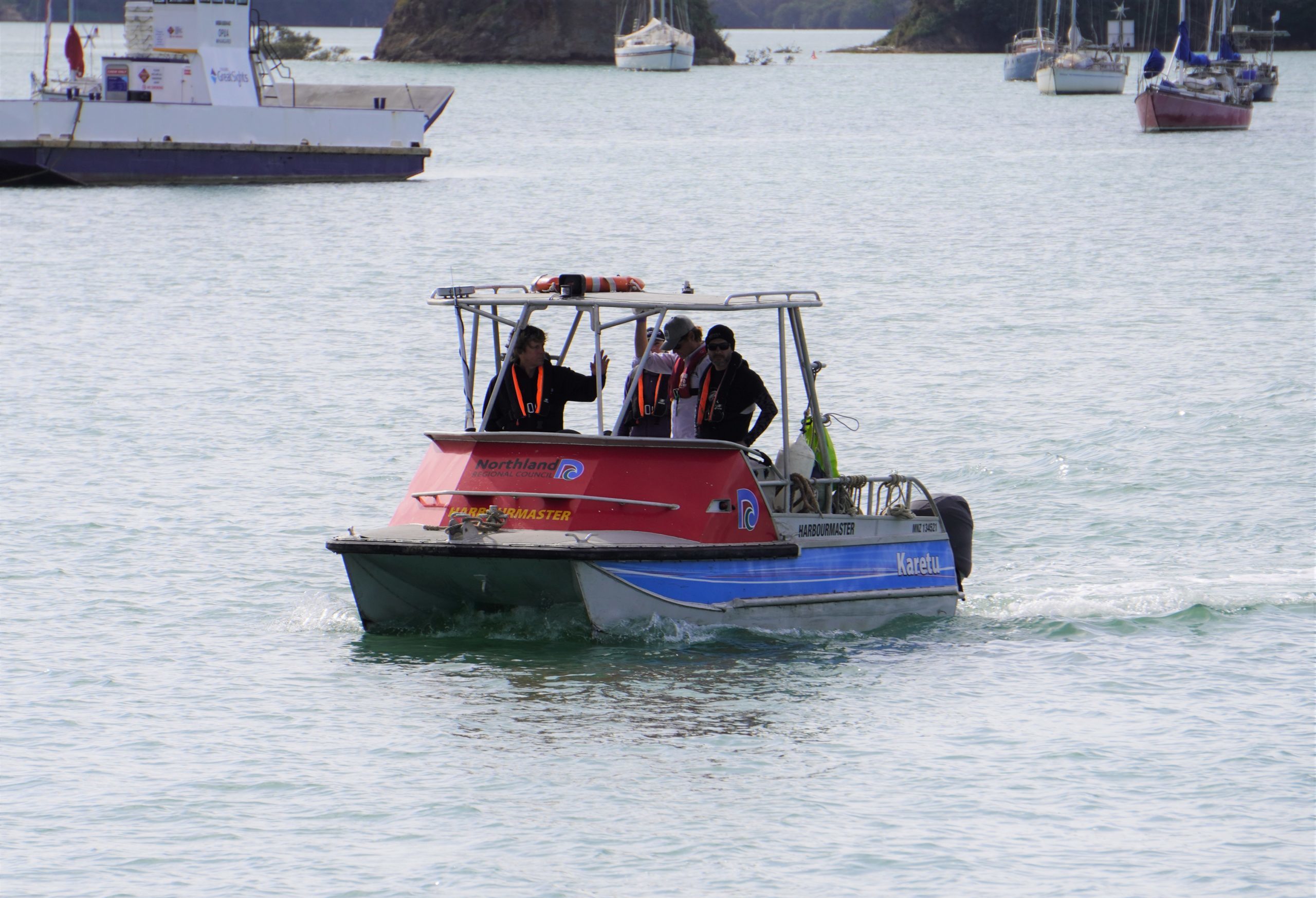
The morning boat sampling crew – Xavier Pochon and Ulla von Ammon (Cawthron), Kaeden Leonard and Sam Meldrum (NRC).
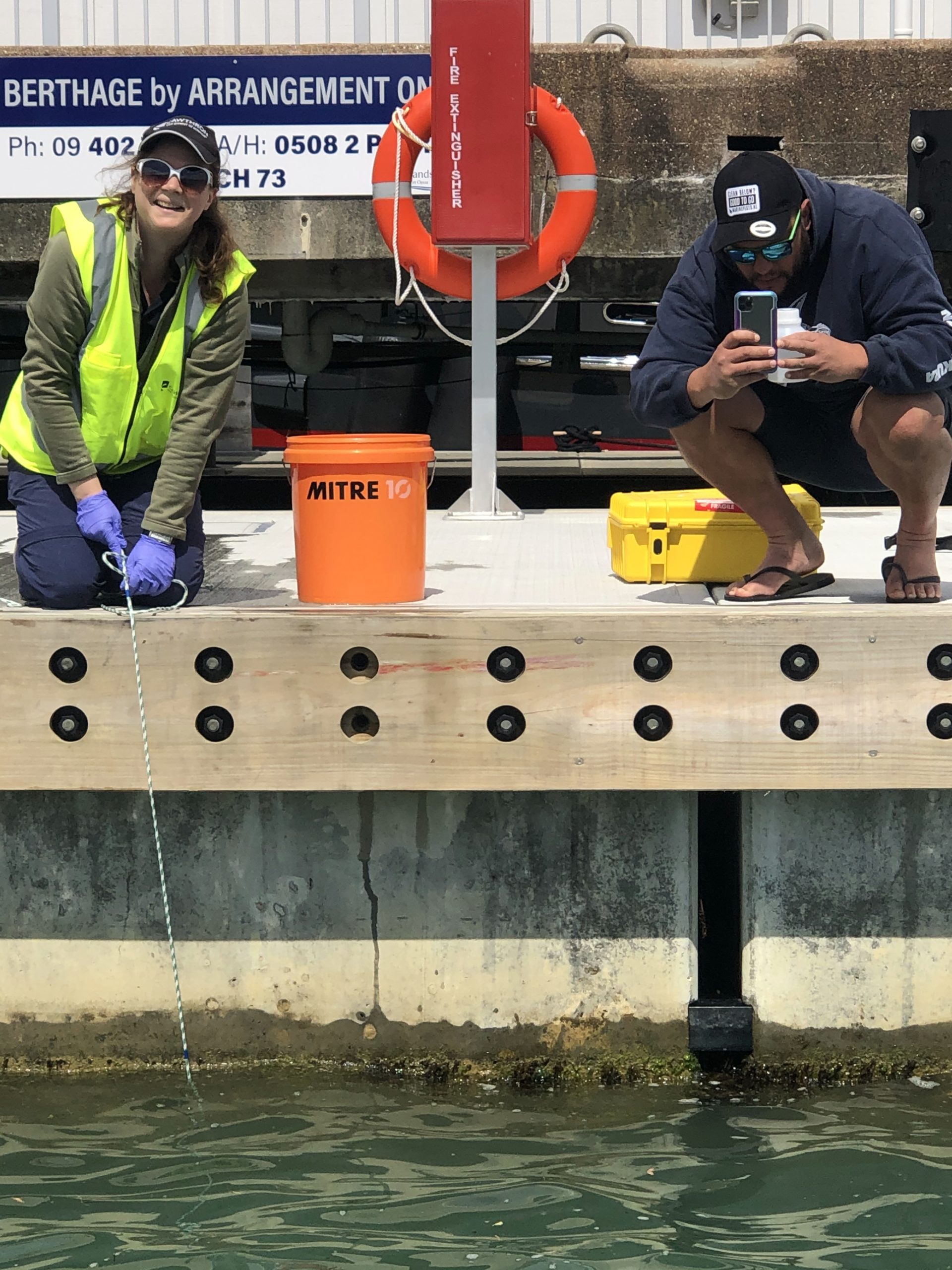
Anastasija Zaiko (Cawthron) collecting a plankton net sample and Ari Carrington (Patuharakeke Taiao Unit) recording hydrochemical parameters at a shore sampling station.
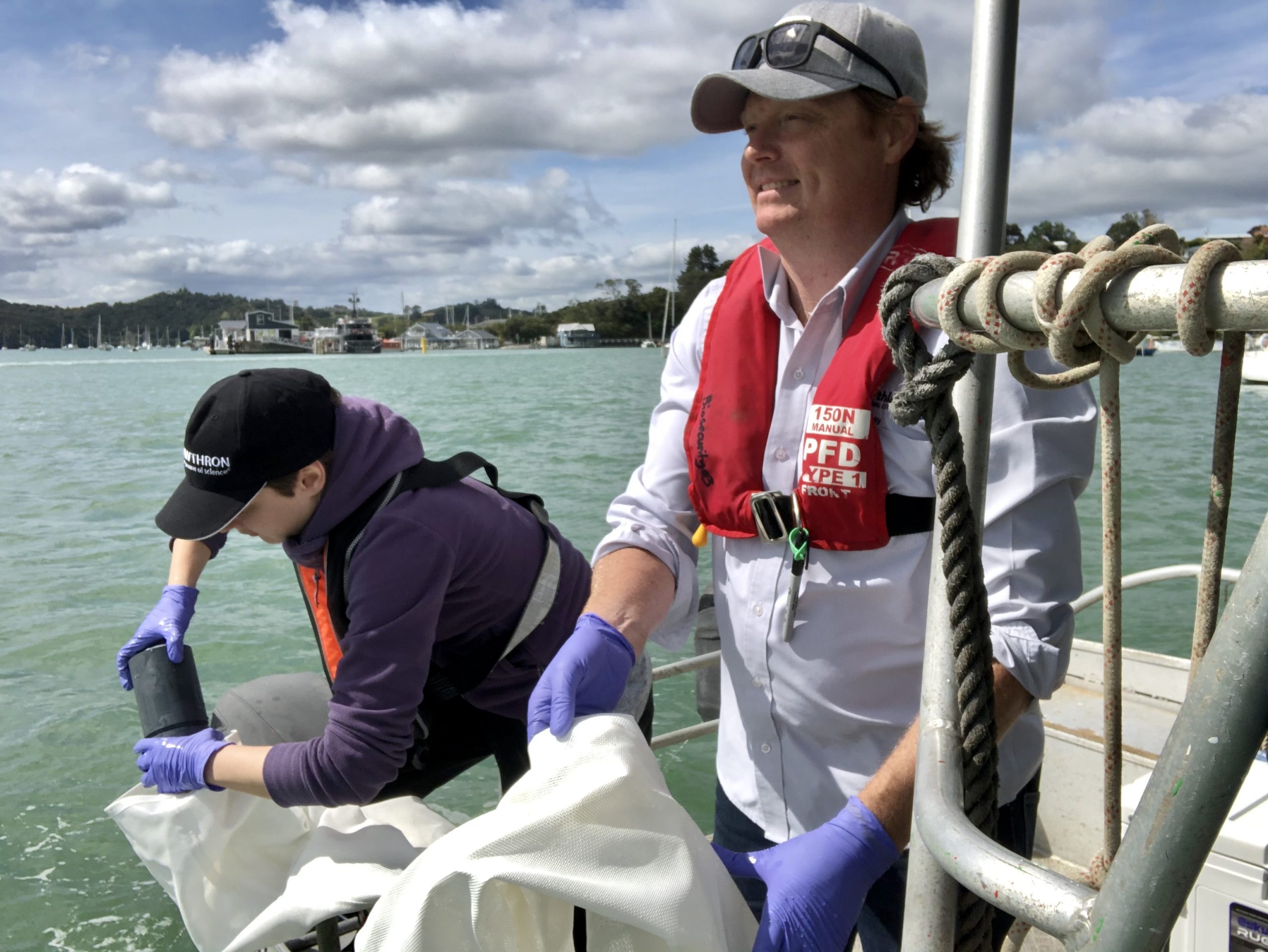
Ulla von Ammon (Cawthron) and Kaeden Leonard (NRC) collecting replicate plankton net samples from the boat.

Anastasija Zaiko and Martin Zirngibl (Cawthron) setting up Smith-Root filtration system for testing alternative eDNA sampling techniques…
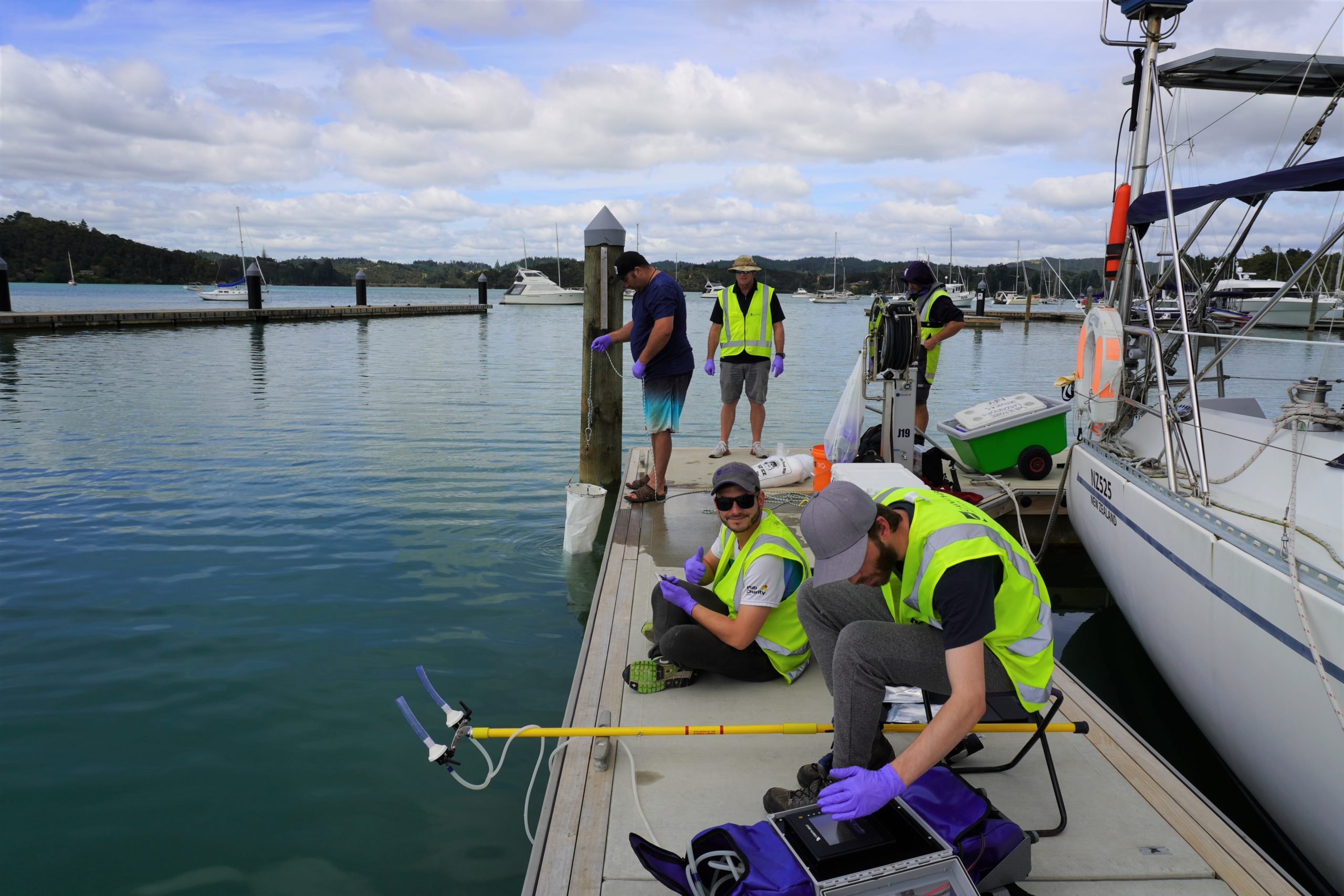
…and the shore sampling team few hours later: Nick Bamford, Curtis Harris (NRC), Steve Johnson (Patuharakeke Taiao Unit), Francois Audrezet and Martin Zirngibl (Cawthron).
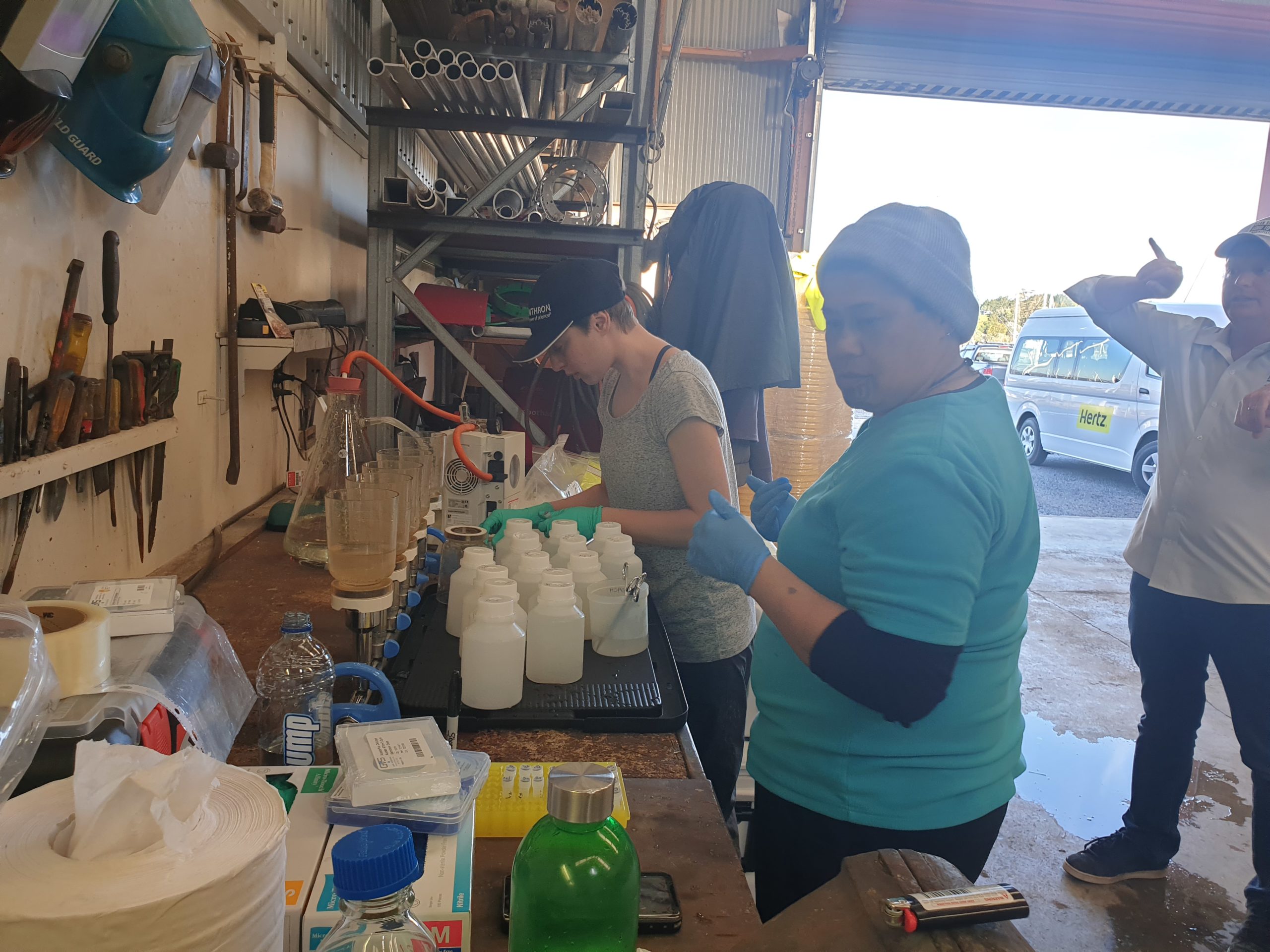
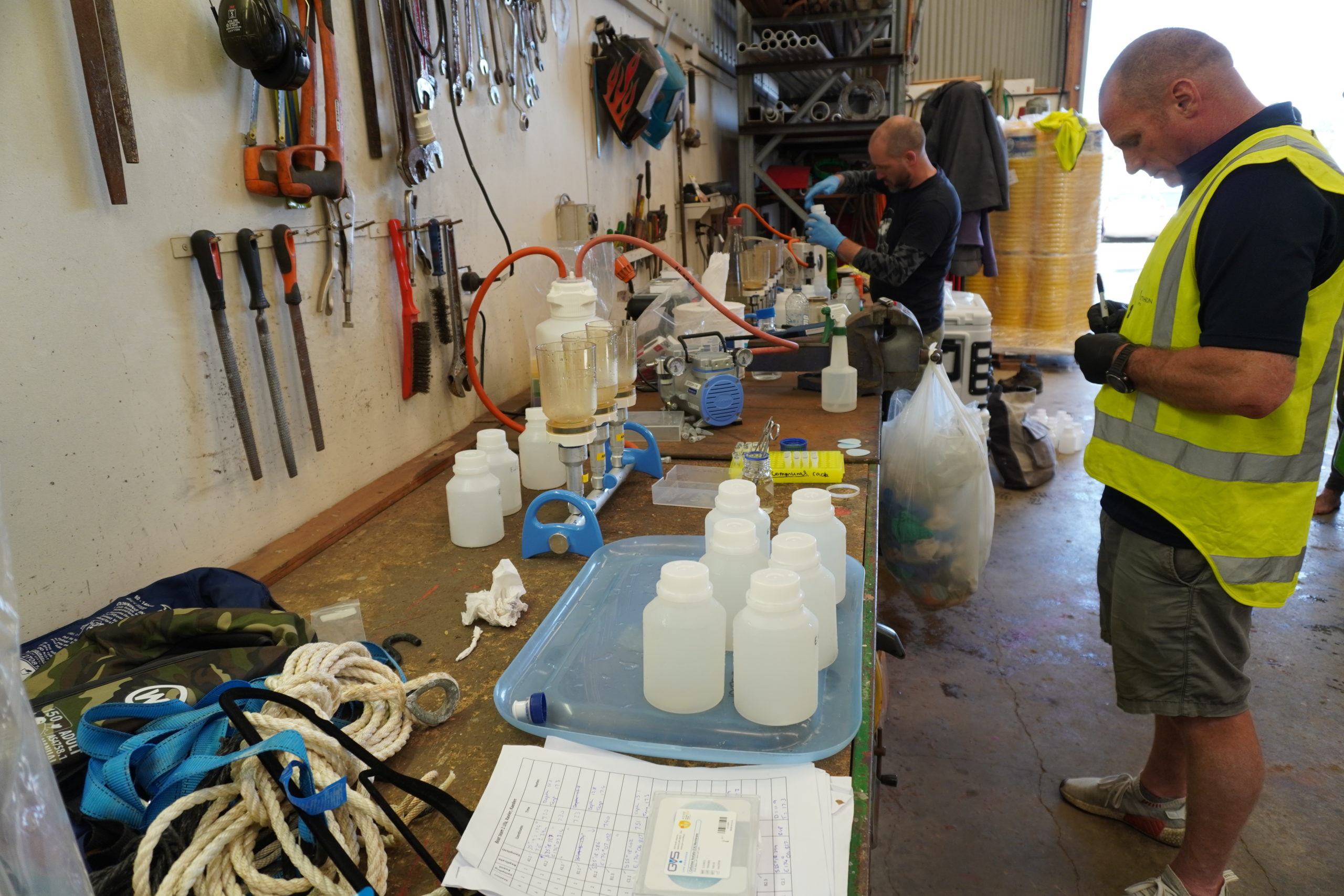
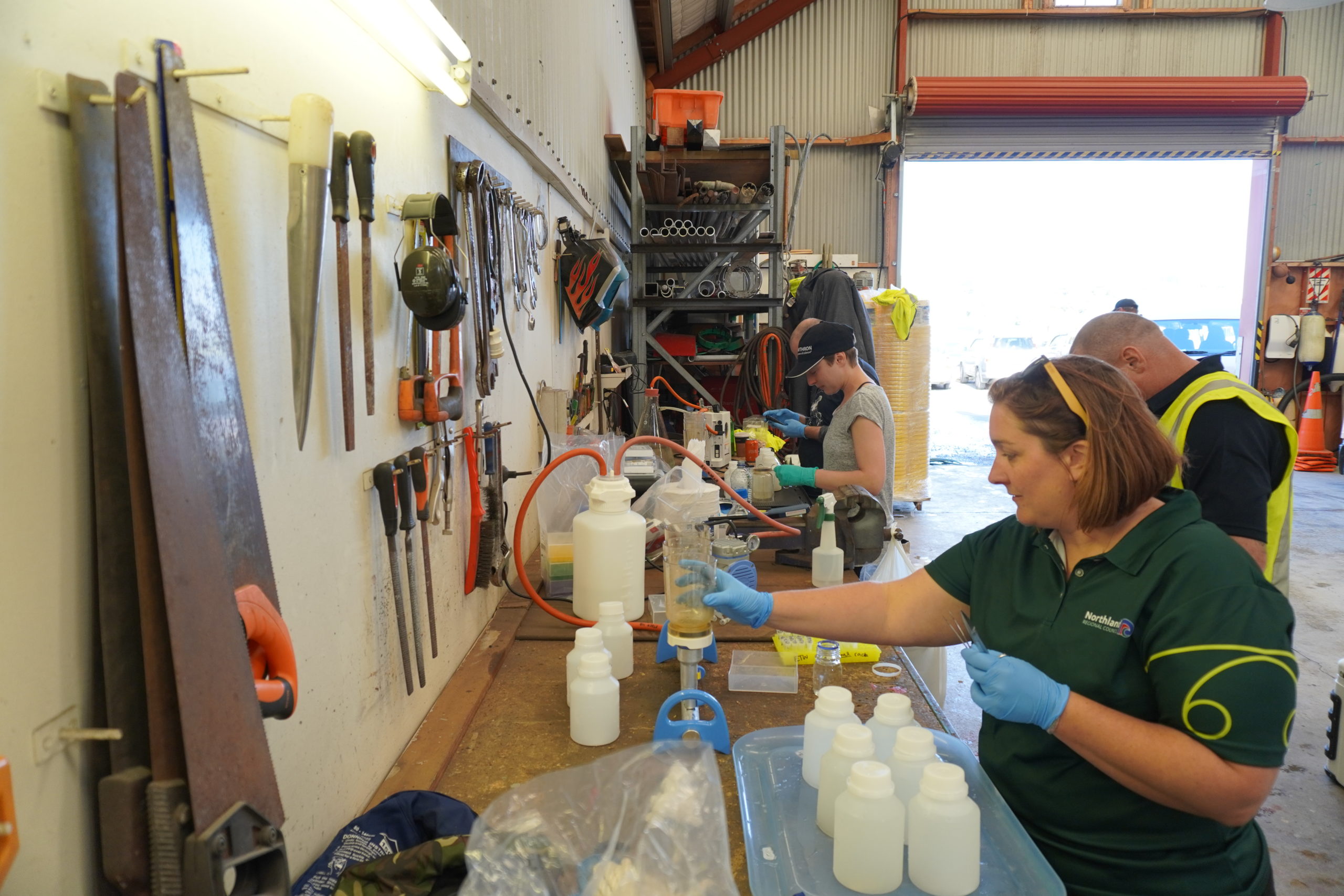
Ngairo Tahere (Pōkai o Ngāti Manu, upper photo), Steve Johnson (Patuharakeke Taiao Unit, middle photo) and Kylie Pedersen (NRC, below photo) help processing collected samples at the temporary wet lab set up in a workshop.
Everything went smoothly on a beautiful blue-sky day. However, the final filtration of our samples is always the bottleneck and we spent an additional day in our scenic accommodation filtering 250 collected water samples and subsampling them into 1000 replicates to be send on dry ice to the Cawthron labs for further processing and molecular analyses (eDNA and eRNA extraction and running species-specific molecular assay for the fanworm detection).
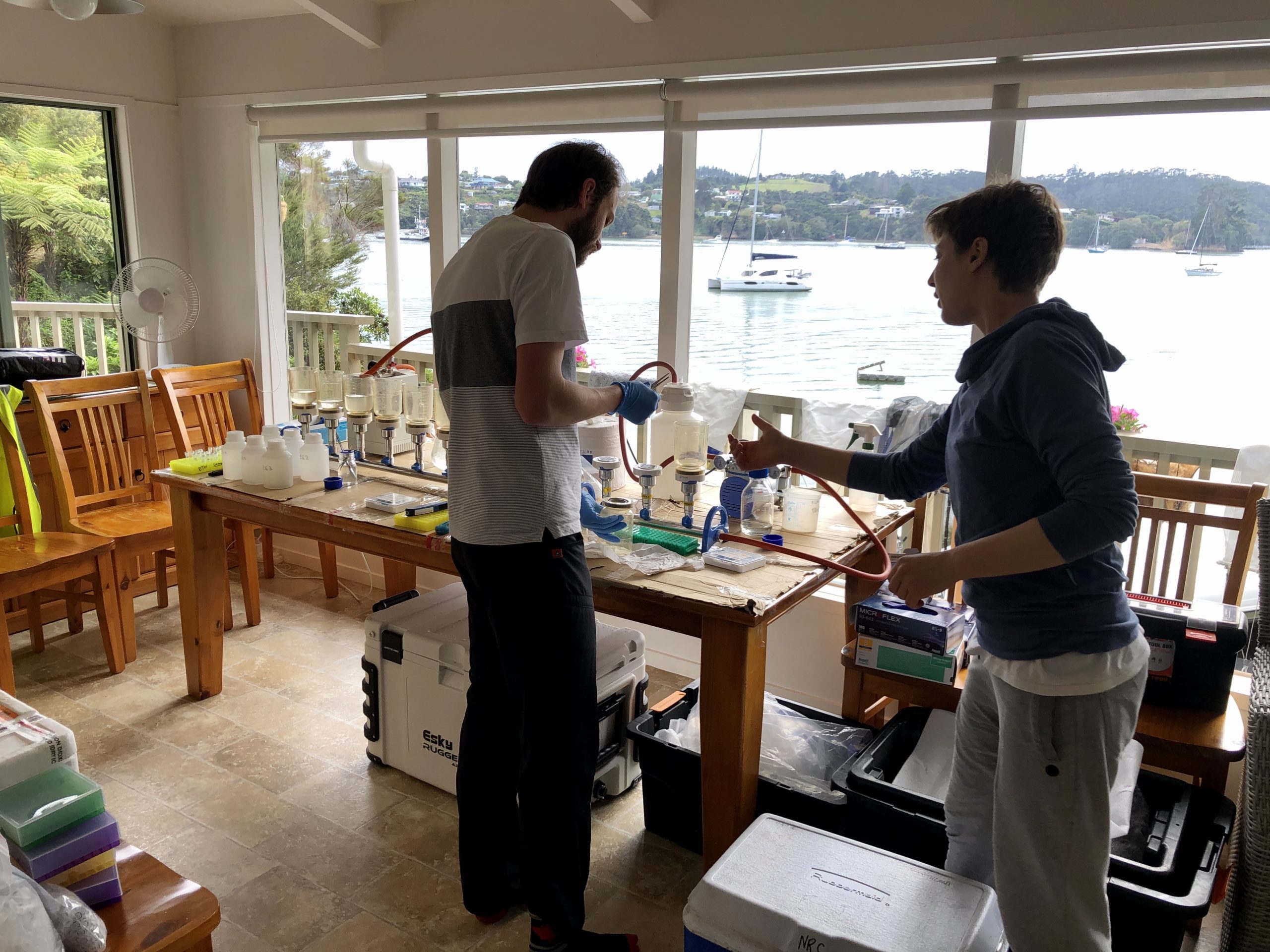
Martin Zirngibl and Ulla von Ammon (Cawthron) at the improvised “laboratory” starting our filtration marathon…
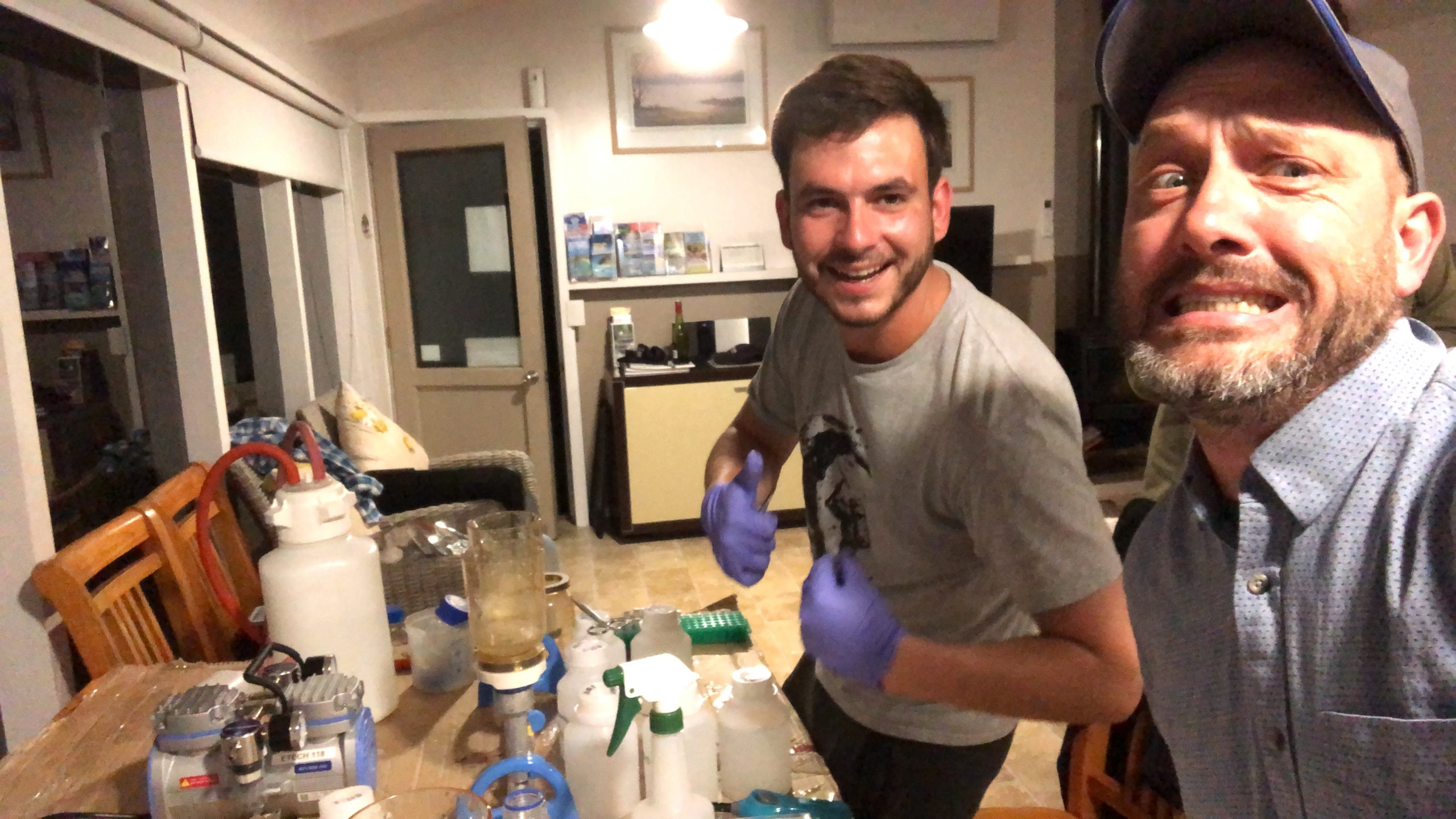
… Francois Audrezet and Xavier Pochon (Cawthron) 15 hours later finishing filtration of the 250 samples. See also time lapse filtration movie below.
Watch this space to learn the results of the validation study and the next steps undertaken to improve the confidence and predictive capacity of the eDNA dispersal model!

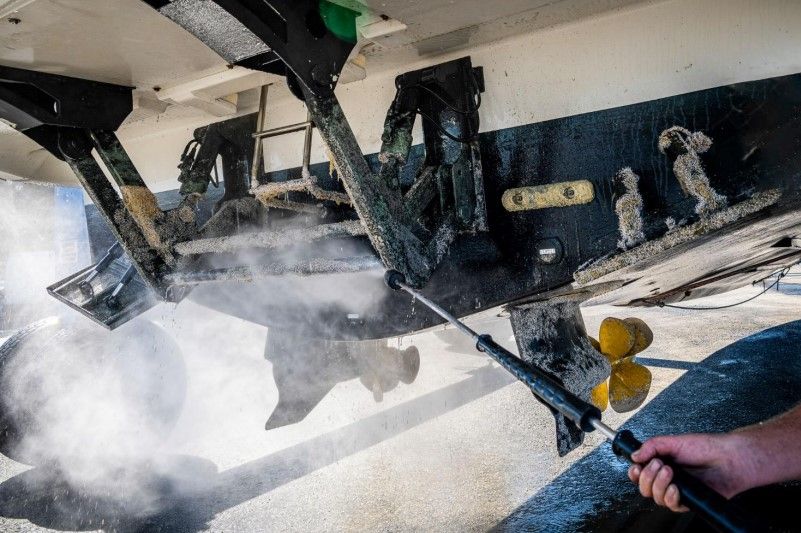
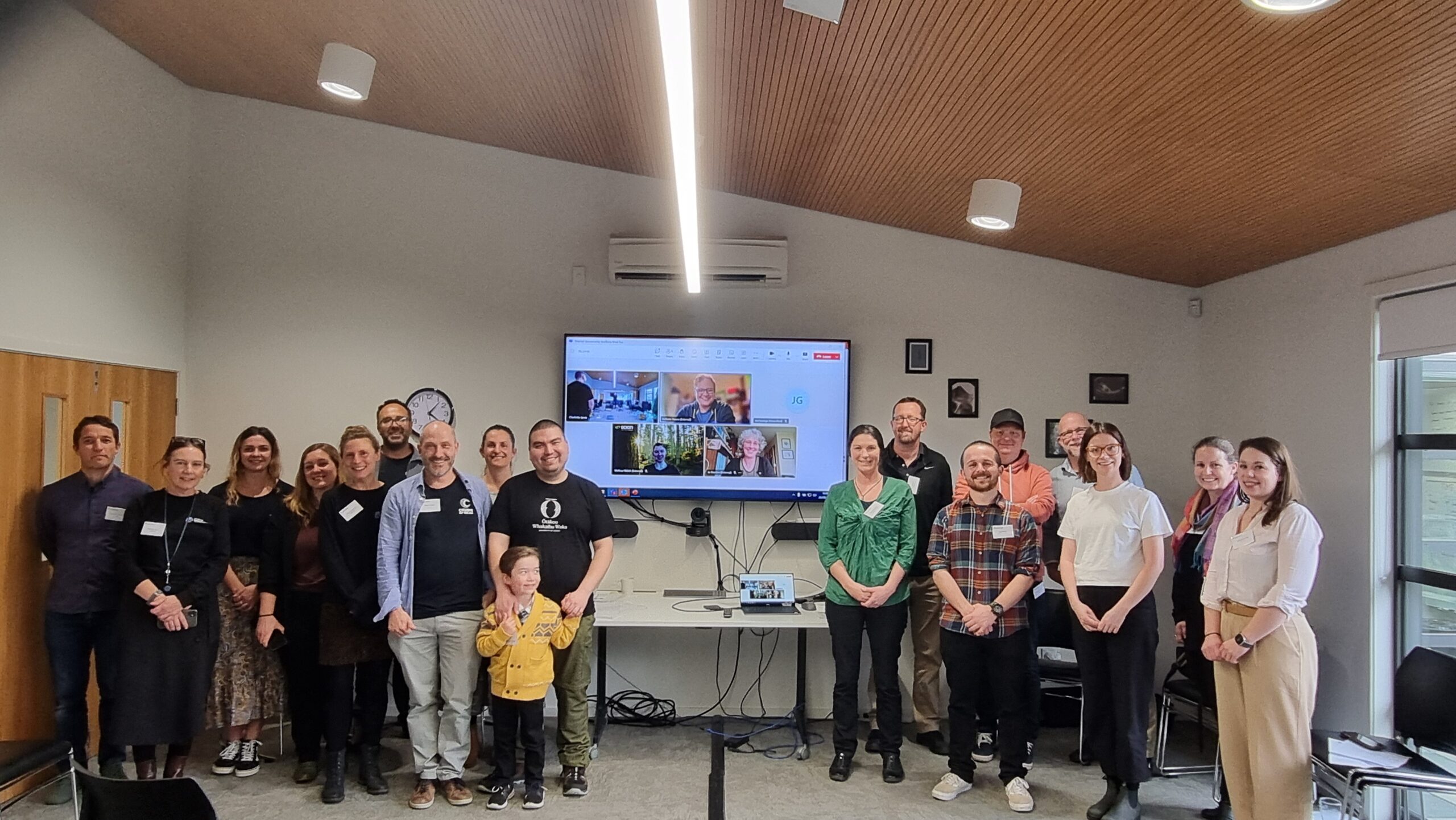
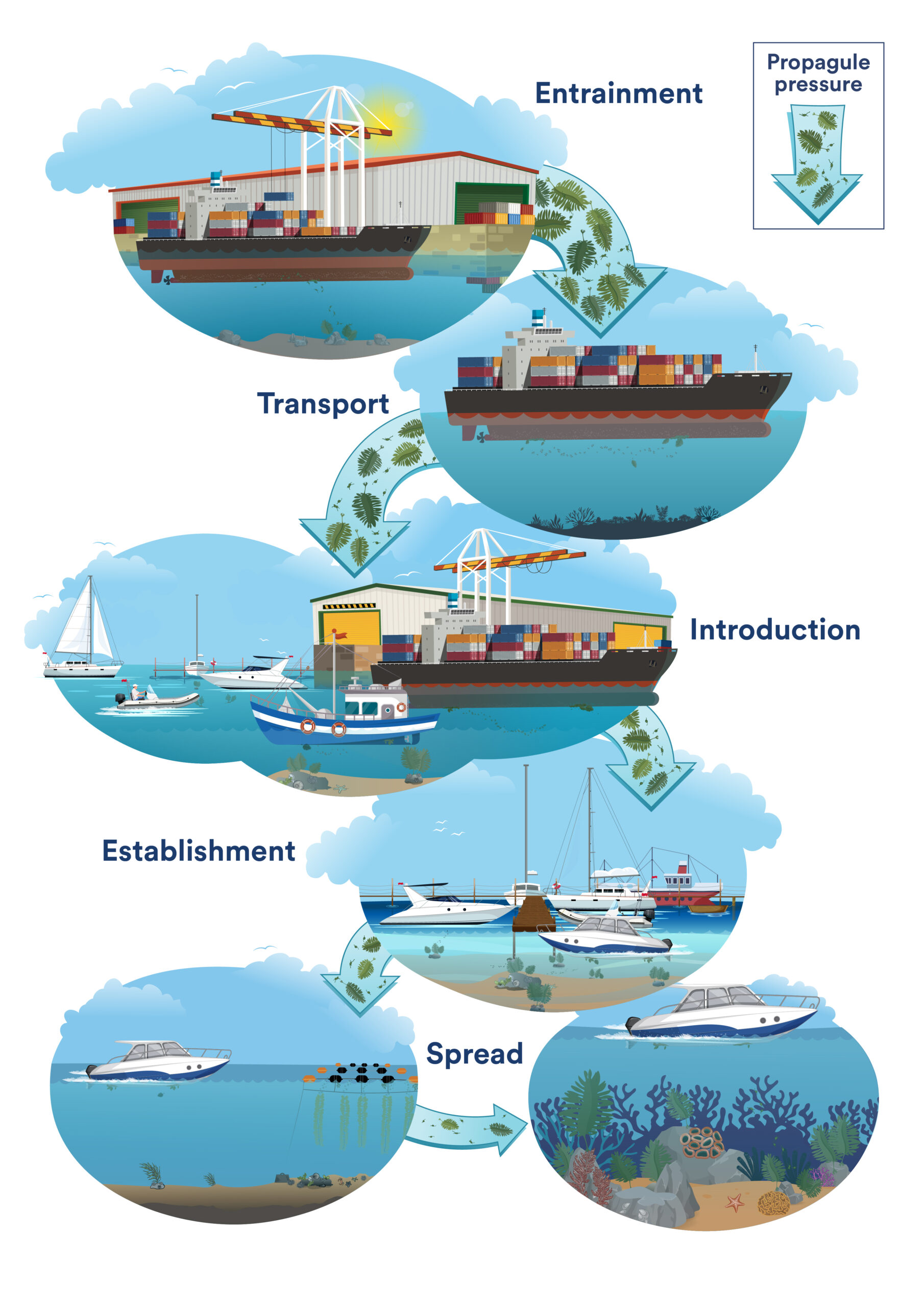
Comments (0)